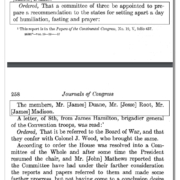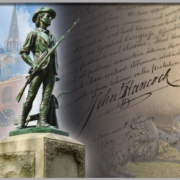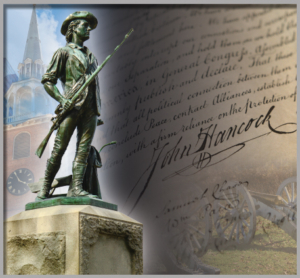March 20, 1781
During the Revolutionary War, Congress issued sixteen proclamations calling for a National Day of Prayer, Fasting and Humilation.
Take a look at the table below. You can click on the “page one | page two” links in the “Journals of the Continental Congress (1774 – 1875)” column to see the image of the text as it’s preserved in the Library of Congress and you can click on the “text” link to view a more “readable” version of the text.”
| Date / Proclamation | Journals of the Continental Congress (1774 – 1875) | text |
| July 20, 1775 | page one | page two | text |
| March 16, 1776 | page one | page two | text |
| December 11, 1776 | page one | text |
| November 1, 1777 | page one | page two | text |
| March 6, 1778 | page one | page two | text |
| November 16, 1778 | page one | text |
| March 20, 1779 | page one | page two | text |
| October 14, 1779 | page one | page two | text |
| March 11, 1780 | page one | page two | text |
| October 18, 1780 | page one | page two | text |
| March 20, 1781 | page one | page two | text |
| October 26, 1781 (British Surrender) | page one | page two | text |
| March 19, 1782 | page one | page two | text |
| October 11, 1782 | page one | text |
| October 18, 1783 | page one | page two | text |
| August 3, 1784 | page one | page two | text |




